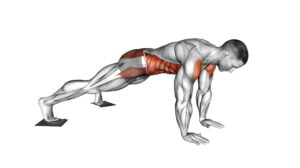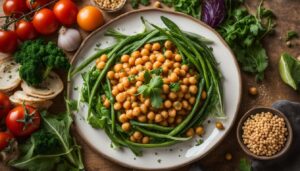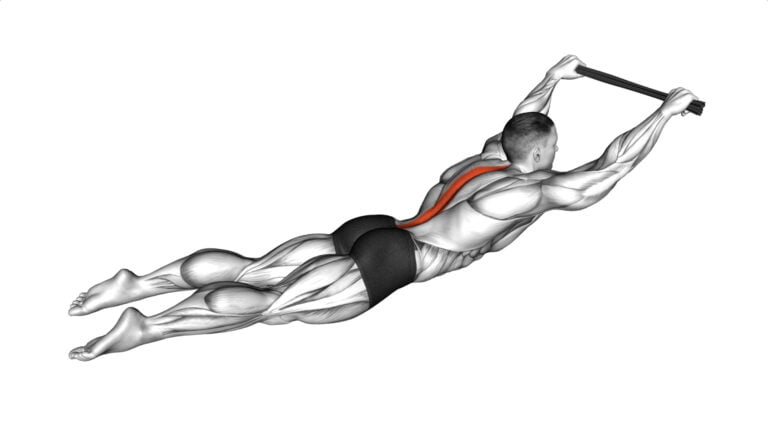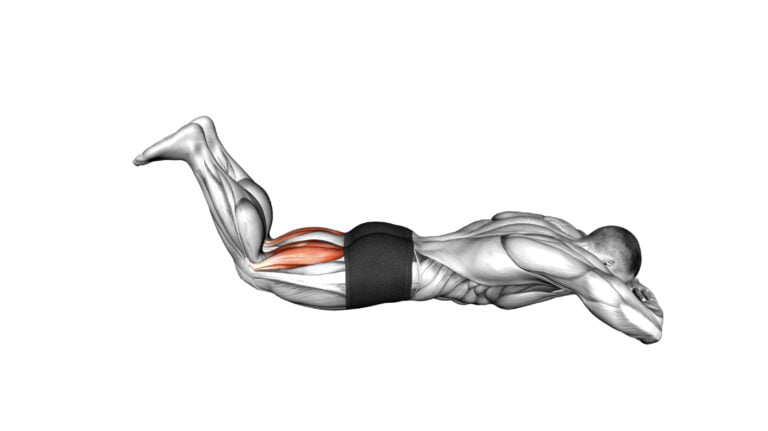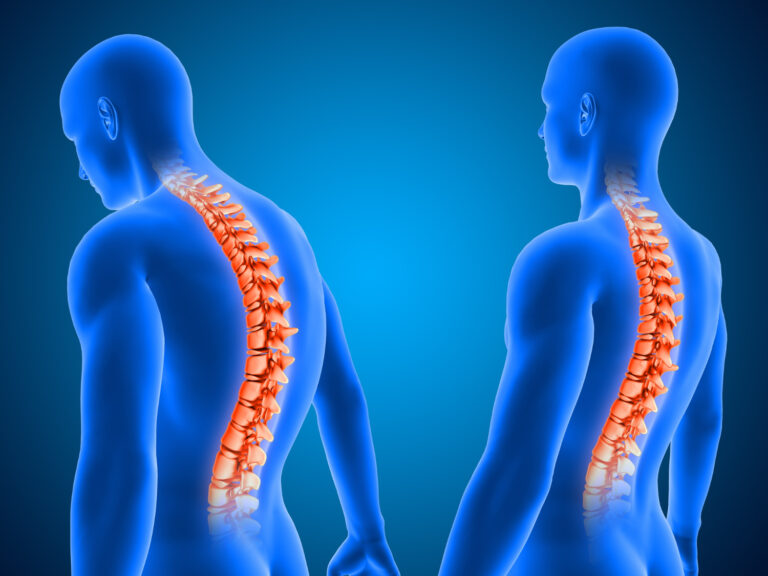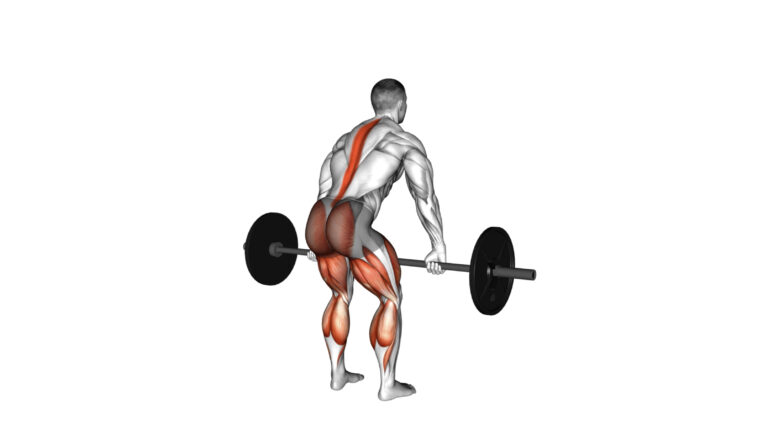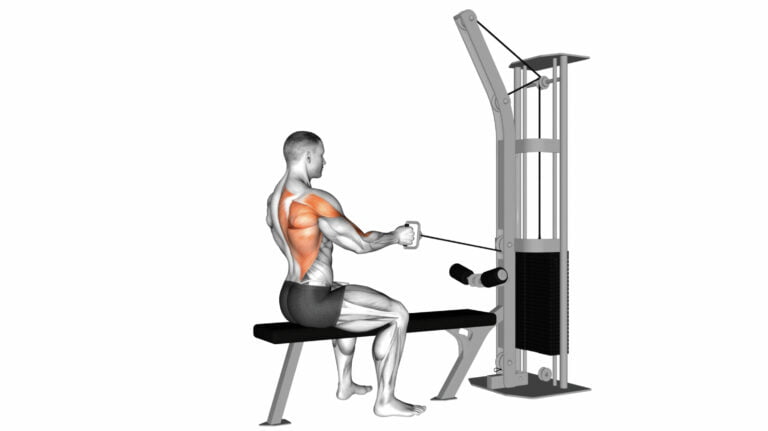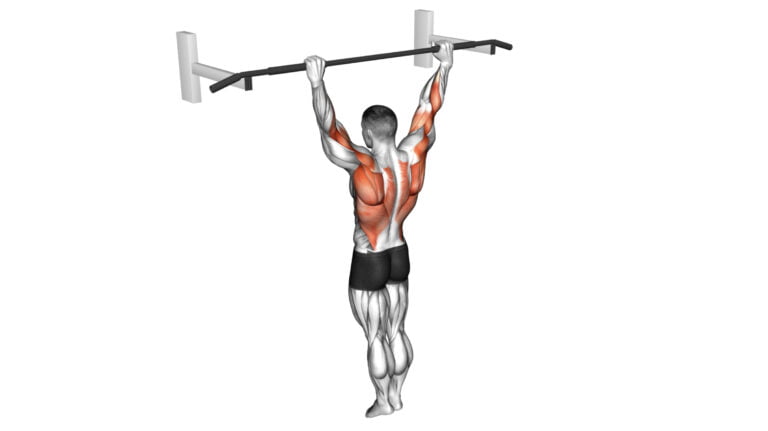Why Do Your Muscles Burn During Exercise: Exploring The Causes And Effects
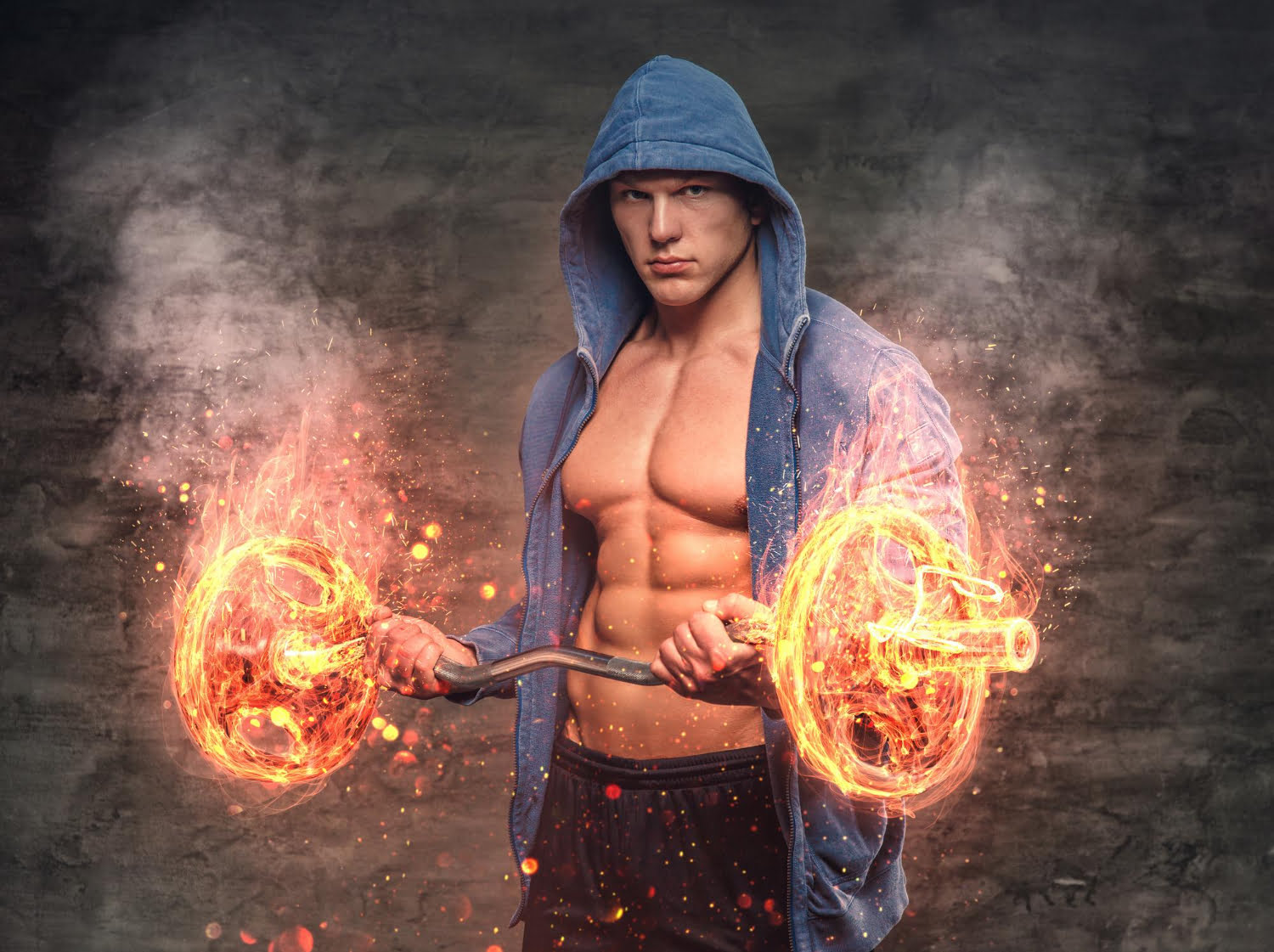
If you’ve ever pushed through a high-intensity workout or added that extra set of squats, you’re familiar with the burning sensation that can surge through your muscles. This fiery feeling is more than just discomfort; it’s a signal of complex biochemical processes at work within your body.
As a seasoned exercise physiologist with over a decade in fitness coaching and sports science research, I’ve delved deeply into understanding why do your muscles burn when you exercise, transforming those insights into strategies for athletes and everyday gym-goers alike.
The burn is not simply about pushing limits; it plays a crucial role in muscle adaptation and performance enhancement. My expertise lies in peeling back layers of this phenomenon to reveal its impact on your training outcomes.
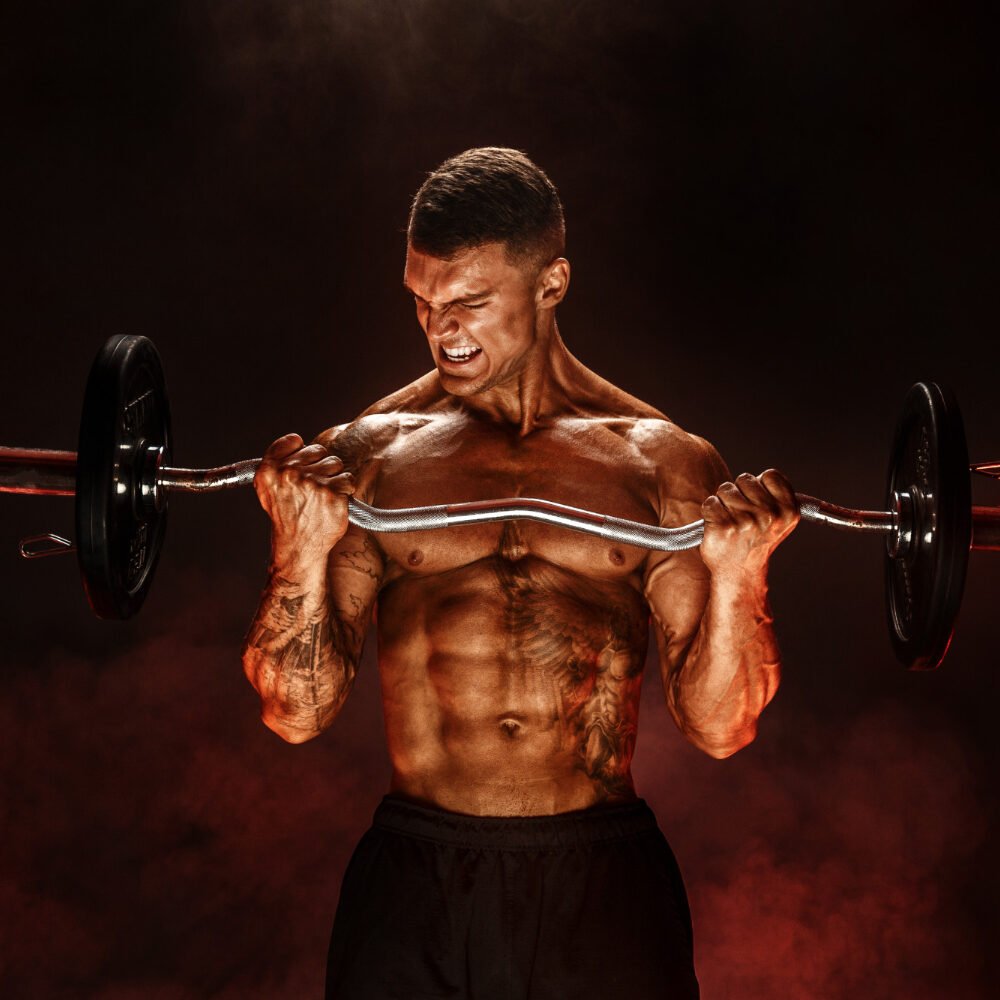
Discovering how to harness the burn can revolutionize your workouts—elevating them from routine exercises to powerful catalysts for growth and endurance. Stay tuned as we unpack the causes, effects, and management of that enigmatic muscle burn—a journey toward optimized training awaits!
Key Takeaways
- Muscle burning during exercise is often due to lactic acid buildup, which happens when there’s not enough oxygen for aerobic metabolism.
- The burn is a signal of intense exertion and can be beneficial as it indicates muscle adaptation but differentiate this from sharp pain which could mean injury.
- Adequate warm – up, hydration, nutrition, and planned recovery methods like icing and massages help manage muscle fatigue and soreness after workouts.
- Delayed onset muscle soreness (DOMS) results from microscopic tears in the muscles, not lactic acid, so recovery strategies should address tissue repair.
- Listening to your body is key; recognize the difference between good burn related to growth and bad pain that might indicate harm.
The Science Behind Muscle Burning During Exercise
During exercise, the muscles burn due to the production of lactic acid, which is a byproduct of glucose breakdown. This buildup of lactic acid causes discomfort and can lead to muscle fatigue, but it’s not the same as experiencing actual pain.
Lactic acid production
As your muscles work hard during exercise, they produce lactic acid as a byproduct. This process kicks in when the body starts to run low on oxygen. Muscles get their energy from breaking down glucose, and without enough oxygen, this breakdown leads to the accumulation of lactic acid within the muscle cells.
The buildup can cause that all-too-familiar burning sensation, signaling you’re pushing into an intense level of physical exertion.
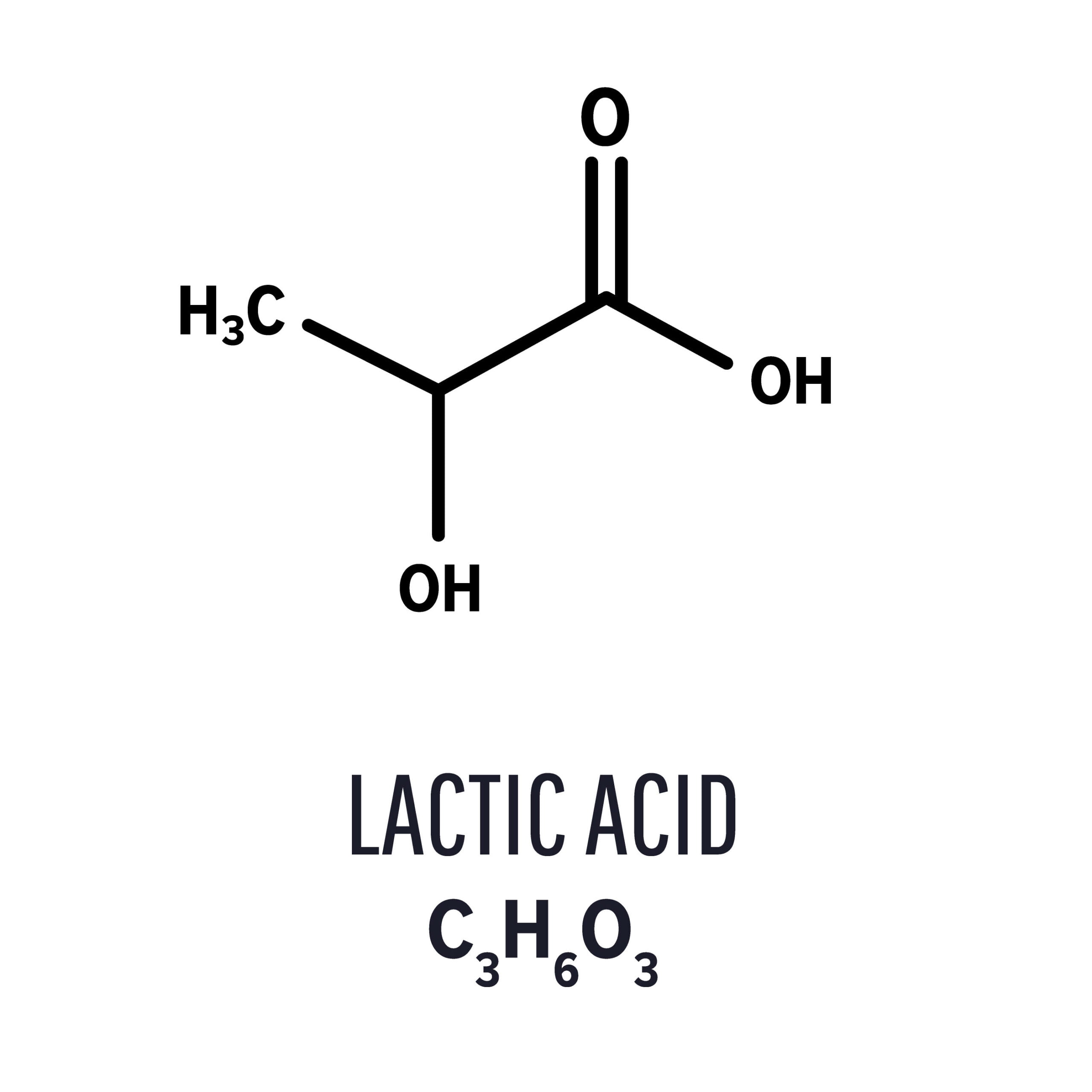
Your body is equipped with mechanisms to clear out lactic acid, converting it back into useful energy through a complex series of metabolic processes like gluconeogenesis and the Krebs cycle.
However, when production outpaces these processes during vigorous activity such as anaerobic exercise or lifting weights, that’s when you feel the burn. Moving onto causes of lactic acid buildup will shed more light on how these sensations develop and what your body is trying to tell you through them.
Causes of lactic acid buildup
Understanding lactic acid production leads us to explore why it accumulates in our muscles. This buildup can greatly affect how our muscles feel and perform during exercise.
- Intense Physical Activity: Rapid and vigorous physical activity, particularly anaerobic exercises like sprinting or lifting heavy weights, causes your muscles to work hard and fast. This intense exertion demands more energy than aerobic respiration can provide, leading to anaerobic glycolysis which produces lactic acid as a byproduct.
- Oxygen Shortage: When your body can’t supply enough oxygen to the muscles during strenuous workouts, it relies more on the anaerobic energy systems. This shift increases lactate production since the pyruvate generated through glycolysis is converted into lactate rather than entering the mitochondria for aerobic metabolism.
- Prolonged Exercise Without Adequate Recovery: Engaging in long-duration activities without sufficient rest intervals may lead to a gradual increase in blood lactate levels. The body’s buffering systems get overwhelmed, resulting in an accumulation of lactic acid within muscle fibers.
- Untrained Muscles: If you’re new to exercising or have increased the intensity of your workouts suddenly, your muscles may not be efficient at metabolizing lactate. This inefficiency can lead to higher levels of lactic acid buildup because your muscle fibers are not accustomed to dealing with intense physical activity aerobically.
- Insufficient Blood Flow: Poor circulation can impair the removal of lactic acid from the muscles. Without adequate blood flow, lactate clearance slows down, causing levels to rise and contributing further to muscular discomfort and fatigue.

Differences in muscle burning from discomfort and pain
As we delve deeper into the reasons muscles burn, it’s crucial to distinguish between typical burning sensations and actual pain. The burning feeling you get during a tough workout often comes from lactic acidosis, which happens when your body breaks down carbohydrates in the absence of enough oxygen.
This sensation is generally a sign that you’re pushing your limits and can be considered discomfort rather than true pain.
On the other hand, sharp or severe pain during exercise can signal an injury like strains or sprains. Unlike muscle soreness from lactic acid buildup, this type of pain isn’t part of the normal bioenergetics of exercise; instead, it’s your body alerting you to stop and assess potential damage.
Listening closely to what kind of burn you feel is key for safe workouts and could save you from more severe injuries that may halt progress towards achieving your fitness goals.
Effects of Muscle Burning During Exercise
Muscle burning during exercise can lead to delayed onset muscle soreness (DOMS), which is the discomfort and pain felt in the muscles 24-72 hours after intense physical activity. Additionally, hitting your lactate threshold during a workout can result in increased muscle fatigue and reduced performance capacity.
Delayed onset muscle soreness (DOMS)
Delayed onset muscle soreness (DOMS) typically occurs 24 to 72 hours after strenuous physical activity. This type of muscle discomfort, often described as a dull ache or stiffness, is caused by microscopic damage to muscle fibers during exercise.
The resulting inflammation and swelling in the affected muscles lead to discomfort and reduced range of motion. DOMS is a common experience for athletes, beginners starting a new exercise routine, or individuals increasing the intensity of their workouts.
The good news is that while DOMS can be uncomfortable, it’s not permanent and doesn’t indicate an injury. In fact, it signifies that your muscles are adapting and growing stronger as they repair themselves post-exercise.
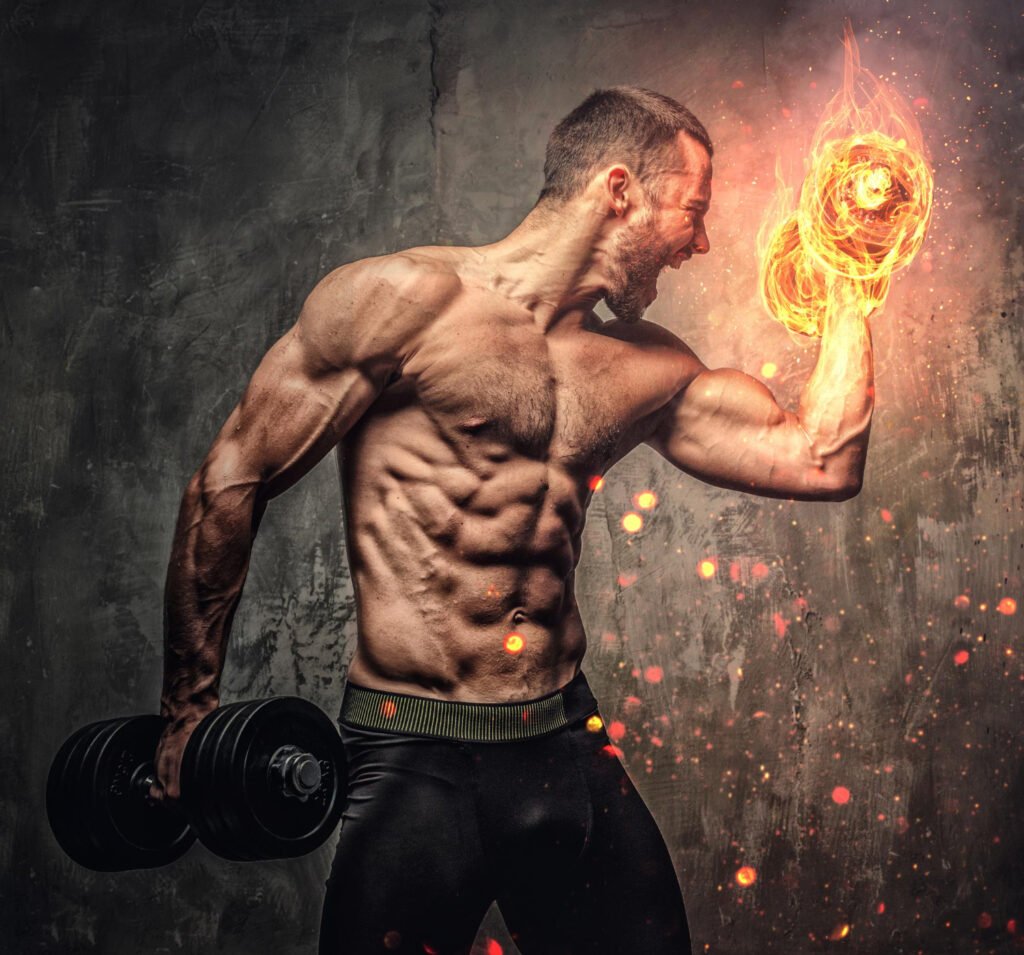
Lactate threshold
Transitioning from delayed onset muscle soreness (DOMS) to discussing the lactate threshold, it’s important to understand how your body responds during intense exercise. The lactate threshold is the point at which lactic acid begins to accumulate in the muscles faster than it can be removed and utilized.
At this stage, you start feeling that familiar burn in your muscles, indicating a shift from aerobic metabolism to anaerobic metabolism.
During high-intensity workouts or endurance activities, such as running or cycling, understanding your lactate threshold is crucial for optimizing performance and building endurance.
Increased muscle fatigue
Muscle fatigue increases as the body’s energy reserves deplete during intense physical activity. As muscles keep working, they require more oxygen and nutrients to function effectively.
However, when these resources are limited, the muscle cells switch to less efficient pathways for energy production, leading to an accumulation of metabolic byproducts like lactic acid.
Consequently, the muscles become fatigued and may not contract with the same force or speed as before.
Additionally, increased muscle fatigue can lead to decreased performance in subsequent exercises due to reduced strength and endurance. To counter this effect, it is essential to allow adequate time for rest and recovery between workouts.
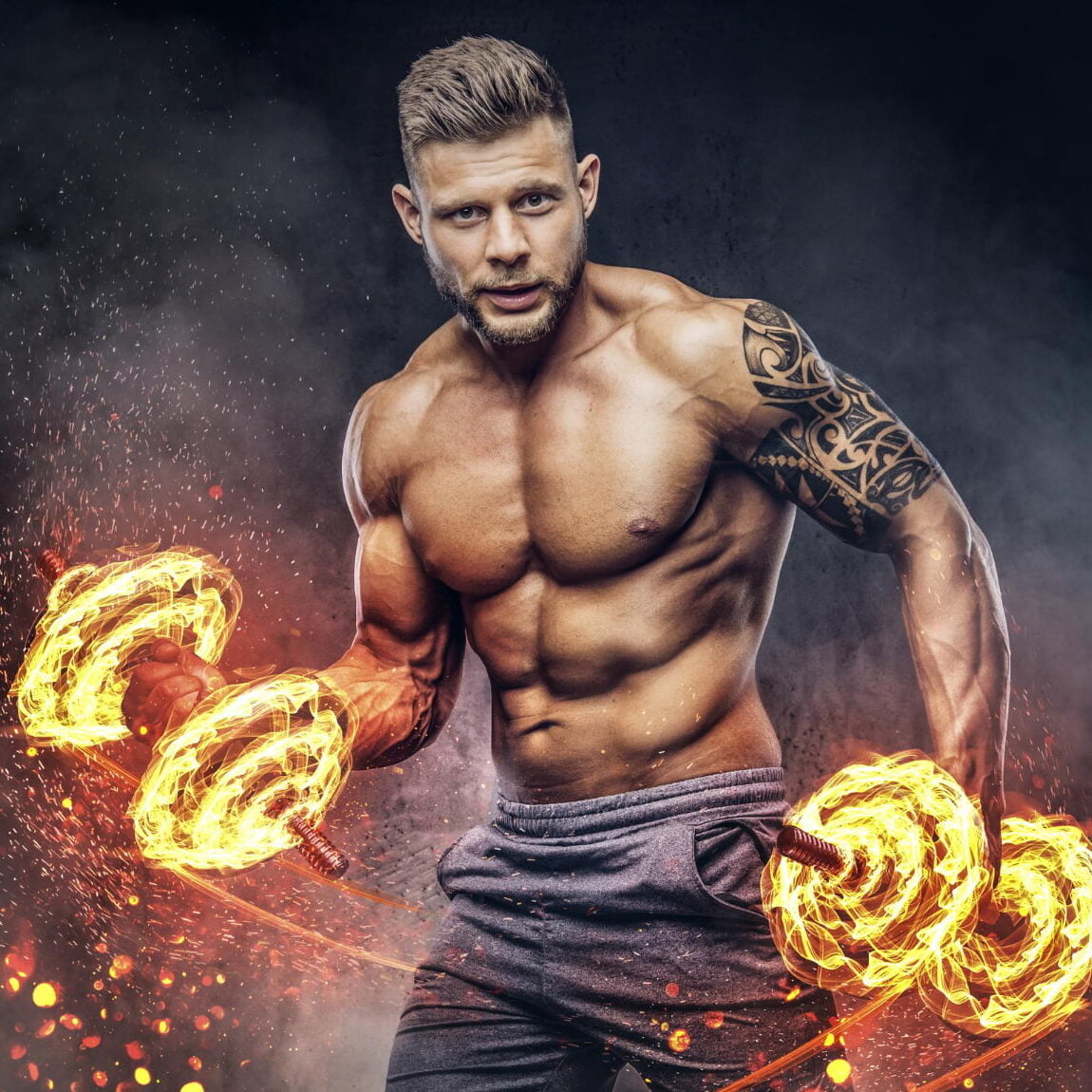
Prevention and Treatment of Muscle Burning
Proper warm-up and stretching techniques, maintaining proper hydration and nutrition, and utilizing recovery methods such as ice baths and massages can help alleviate muscle burning during exercise.
To learn more about the best ways to prevent and treat muscle burning, keep reading!
Proper warm-up and stretching techniques
Engage in dynamic warm-up exercises to increase blood flow and prepare your muscles. Incorporate movements that mimic the upcoming activity, such as leg swings, arm circles, and bodyweight squats. Additionally, perform static stretches after the warm-up to lengthen and loosen the muscles you will be using during your workout.
- Dynamic Warm-Up: Perform activities such as jogging in place, high knees, and arm swings to elevate heart rate and stimulate blood flow throughout the body.
- Sport-Specific Movements: Incorporate movements related to your planned exercise routine, such as lunges for runners or shoulder rotations for weightlifters.
- Static Stretching: After the dynamic warm-up, hold stretches for major muscle groups – hamstrings, quadriceps, calves, shoulders – for 15-30 seconds each to improve flexibility and reduce the risk of injury.
- Gradual Progression: Ease into your workout intensity following a thorough warm-up rather than immediately diving into high-impact or heavy lifting exercises.
- Cool Down: Finish your session with similar static stretching to help prevent stiffness and aid recovery.
Maintaining proper hydration and nutrition
To keep muscle burning at bay, maintaining proper hydration and nutrition is crucial. Here are essential tips for achieving this:
- Drink plenty of water throughout the day to stay adequately hydrated. Water facilitates the transport of nutrients to your muscles and helps in flushing out toxins.
- Consume a balanced diet rich in lean proteins, complex carbohydrates, and healthy fats to provide your muscles with the necessary nutrients for repair and growth.
- Incorporate electrolyte – rich foods such as bananas, nuts, and leafy greens to replenish lost minerals during exercise and prevent muscle cramps.
- Consider consuming sports drinks or electrolyte – enhanced beverages during intense workouts to replace lost fluids and electrolytes.
Recovery methods (ice baths, massages)
To rejuvenate your muscles after a challenging workout, utilizing recovery methods such as ice baths and massages can significantly aid in alleviating muscle soreness and enhancing overall recovery. These techniques are valuable for promoting optimal muscle repair and reducing discomfort post-exercise. Here’s how these methods contribute to enhanced recovery:
- Ice Baths: Immersing yourself in an ice bath immediately after intense physical activity helps constrict blood vessels, decrease metabolic activity, and reduce swelling and tissue breakdown. This method accelerates the removal of waste products from your muscles and facilitates the speedy delivery of oxygen-rich blood, promoting faster muscle recovery.
- Massages: Employing massages as a recovery method aids in relaxing tight muscles, improving blood circulation, and relieving tension. By targeting specific muscle groups, massages can enhance flexibility, reduce inflammation, and alleviate any lingering soreness or discomfort caused by strenuous exercise.

Debunking Myths About Muscle Burning and Exercise
Contrary to popular belief, lactic acid is not the sole cause of post-workout soreness. It’s important to understand the various factors that contribute to muscle burning and discomfort during exercise in order to minimize injury and maximize performance.
Lactic acid as the sole cause of post-workout soreness
Lactic acid production in muscles during intense exercise does contribute to that burning sensation, but it’s not the sole cause of post-workout soreness. While lactic acid accumulation can lead to muscle fatigue and discomfort, delayed onset muscle soreness (DOMS) is actually caused by microscopic damage to muscle fibers from the strenuous exercise.
This damage triggers an inflammatory response within the body, resulting in soreness 24 to 72 hours after the workout.
Understanding this distinction is crucial for anyone engaging in regular physical activity, as it emphasizes the importance of comprehensive recovery strategies beyond simply reducing lactic acid buildup.
Proper rest, nutrition, and targeted recovery techniques play a vital role in minimizing post-exercise soreness and enhancing overall performance.
Importance of listening to your body
While understanding the science and effects of muscle burning during exercise is crucial, it’s equally important to listen to your body. Paying attention to signals such as discomfort, pain, or fatigue can help prevent injuries and optimize performance.
By tuning into your body’s cues, you can adjust your workout intensity and technique accordingly.
Recognizing when muscles need rest or recovery is vital in preventing overtraining and promoting long-term physical well-being. Additionally, being attuned to how different types of muscle burning feel can aid in distinguishing between normal post-workout soreness and potentially harmful pain.
Conclusion
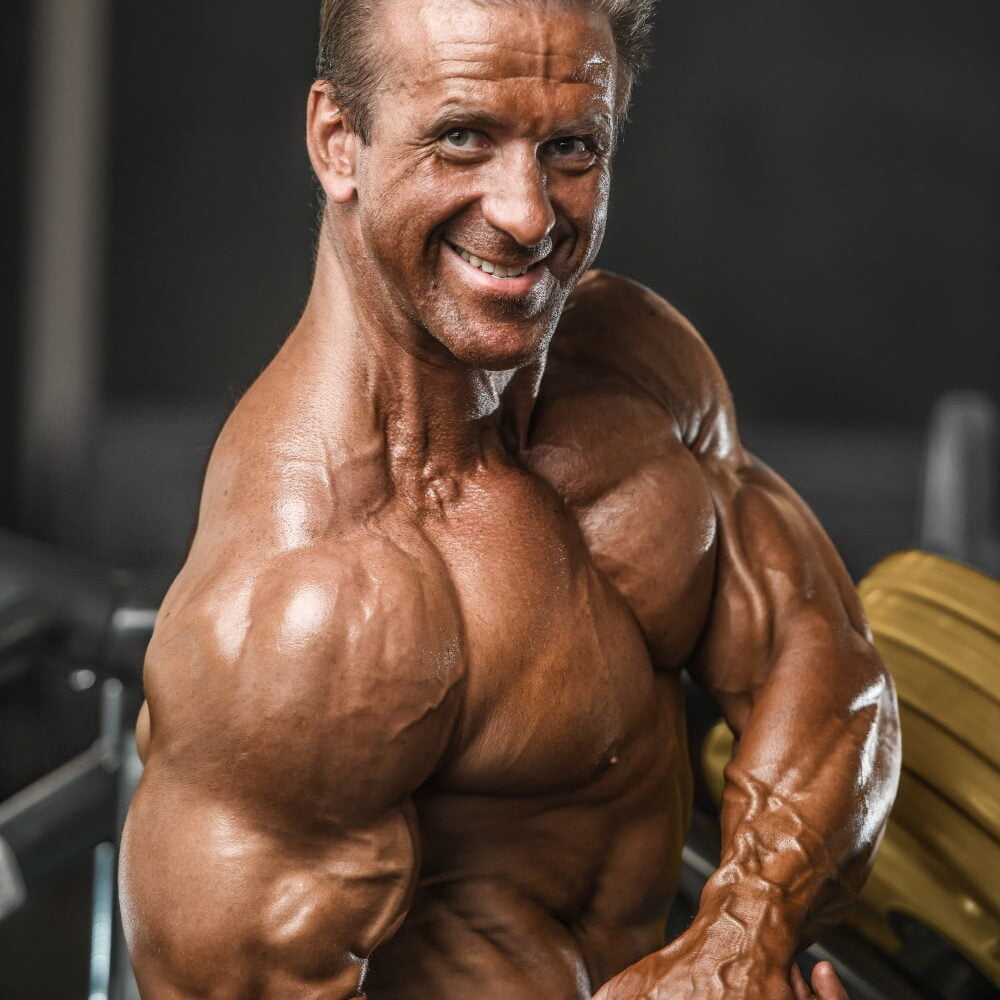
Incorporate the strategies discussed into your exercise routine for effective results. Embrace proper warm-up techniques to prevent muscle burning during workouts. Have confidence in maintaining hydration and nutrition for optimal performance.
Explore additional recovery methods like ice baths and massages to alleviate muscle soreness. Remember, consistent application of these methods will lead to improved workout experiences and better overall fitness levels!
FAQs
1. What causes the burning feeling in my muscles when I exercise?
When you work out, your muscles burn because they produce lactic acid and hydrogen ion as a response to high-intensity activity. This happens more in conditions where oxygen is scarce, turning glucose into energy.
2. Can too much lactate harm my muscles?
While lactate helps keep your muscle cells fueled during intense workouts, an excess amount known as hyperlactatemia can contribute to that sore feeling after exercise.
3. Why do fast-twitch muscle fibers lead to more muscle burning?
Fast-twitch muscle fibers are designed for short bursts of power and speed, using the phosphagen system which generates adenosine triphosphate quickly but also leads to quicker buildup of byproducts that cause burning sensations during heavy lifting or sprinting.
4. Does aerobic training reduce the ache I feel from exercise?
Consistent aerobic training improves your aerobic capacity and metabolism under aerobic conditions, meaning less cramping from activities like cardio workouts because your body becomes better at managing byproducts like lactic acid efficiently.
5. How does blood sugar affect my workout experience with regards to muscle burn?
Your body metabolizes blood sugar into glycogen for energy during physical activity; however, if glycogen reserves run low it may lead to achy muscles due to inadequate fuel sources being available for sustained exercise efforts.
6. Will improving my enzyme levels through diet help with post-exercise pain?
Boosting enzymes such as lactate dehydrogenase through nutrient-rich food can enhance how effectively your body turns lactate back into useful energy, potentially reducing soreness following strenuous workouts.

Author
Years ago, the spark of my life’s passion ignited in my mind the moment I stepped into the local gym for the first time. The inaugural bead of perspiration, the initial endeavor, the very first surge of endorphins, and a sense of pride that washed over me post-workout marked the beginning of my deep-seated interest in strength sports, fitness, and sports nutrition. This very curiosity blossomed rapidly into a profound fascination, propelling me to earn a Master’s degree in Physical Education from the Academy of Physical Education in Krakow, followed by a Sports Manager diploma from the Jagiellonian University. My journey of growth led me to gain more specialized qualifications, such as being a certified personal trainer with a focus on sports dietetics, a lifeguard, and an instructor for wellness and corrective gymnastics. Theoretical knowledge paired seamlessly with practical experience, reinforcing my belief that the transformation of individuals under my guidance was also a reflection of my personal growth. This belief holds true even today. Each day, I strive to push the boundaries and explore new realms. These realms gently elevate me to greater heights. The unique combination of passion for my field and the continuous quest for growth fuels my drive to break new ground.





